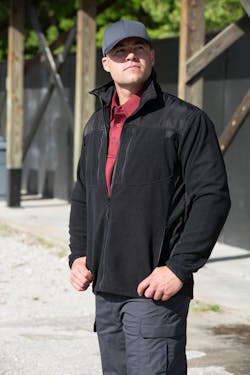The Changing Season and Your Uniform
No matter the task, no matter the situation, no matter how the event changes, a little preparation is always a good idea. Weather changes. It’s either colder or warmer. It either stops raining or starts. Adapting to this is part of any good cop’s day to day planning process.
That’s day by day though. Making sure you’re wearing the proper clothes to address “today’s” weather conditions is one thing—making sure the agency has those options ready and available for its officers is another.
Buying a standard uniform to meet that cross section of transitional seasons can be a challenge. Days start cold then warm to where a long-sleeve polo can leave you comfortable—then it’s cold again and all the melt freezes over again. (And that’s just one example of this country’s changing climate.) Instead of addressing how to dress day to day, apparel manufacturers look to help your department’s standard uniform adapt without an overhaul of the locker room.
Before going further, consider body armor a layer. It is no secret that wearing body armor can get hot. It can add a level of warmth to your core, chest and back. Keep this in mind and think about before piling on the layers. This is one layer you shouldn’t peel off.
A Term or Two to Know
As you begin the process of researching the options available in updating the uniform to address the transitional season you’ll have to decide on the fiber material. We see a trend in law enforcement that veering away from the traditional cotton fibers and adding in polyester into the uniforms and outer wear. If the professional image is a concern, keep an eye out for polyester as it won’t wrinkle as easily and keeps a better color. Due to how the dye is applied to the material in the manufacturing process, the color of a traditional cotton and natural fiber-based apparel tends to fade before polyester. Taking advantage of this property, uniform companies have integrated polyester into their cotton blend or moved to a full polyester.
Another item on the “specifications” bullet list: moisture wicking. The truth is, any material has a level of moisture wicking. True “wicking” fabrics spread out moisture to increase the absorbing area. Since a larger area equals quicker evaporation, that’s where a cooling effect comes in. A polyester or synthetic blend tends to accomplish this better than a traditional natural/cotton fiber.
While there’s no rating system or 1-to-10 scale for the level of moisture wicking, “water resistance” and “water proof” are a different story. Labeling a garment waterproof requires a certain level of certification. As one might guess, water resistance tends to mean that water is meant to bead up and roll off instead of being sealed.
Manufacturers have also been pretreating some products with DWR (durable water repellant) to help officers keep a clean professional image. It’s an aftermarket treatment and won’t last forever. Retreat the clothing with another layer every so often.
For Your Trunk
A few items agencies may want to think about having as a ready option in the patrol car—and approved in the uniform policy.
A garment with multiple layers already. With a 3 in 1 parka, for example, officers could wear the interior layers leaving that last heavy outer layer in the patrol car. Or vice versa and wear the shell alone.
Keep your eye open for a wind resistant and/or rain resistant wind breaker. There’s no reason you need to stay miserable while doing your job in a sudden downpour.
Think reflective. If you’re lucky enough to work in something that gives you a jacket at the same time, a reversible might give you that ANSI 3 standard while also being a lightweight jacket.
Officers need the gear they need to do their jobs. Manufactures are always challenging themselves to find that uniform to get them comfortable at the same time. Wearing layer on top of layer isn’t always going to be the best solution.
If interested, contact the company or find your local retailer. Oftentimes you can request a wear test and make sure the garment is right.

Jonathan Kozlowski
Jonathan Kozlowski was with Officer.com, Law Enforcement Technology, and Law Enforcement Product News from August 2006 to 2020.
As former Managing Editor for Officer Media Group, he brought a dedicated focus to the production of the print publications and management of the Officer.com online product and company directory. You can connect with Jonathan through LinkedIn.
Jonathan participated as a judge for the 2019 and 2020 FOLIO: Eddie & Ozzie Awards. In 2012, he received an APEX Award of Excellence in the Technology & Science Writing category for his article on unmanned aerial vehicles (UAVs) in police work, aptly titled "No Runway Needed".



